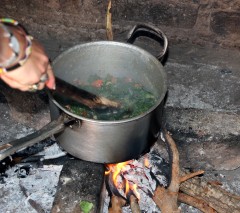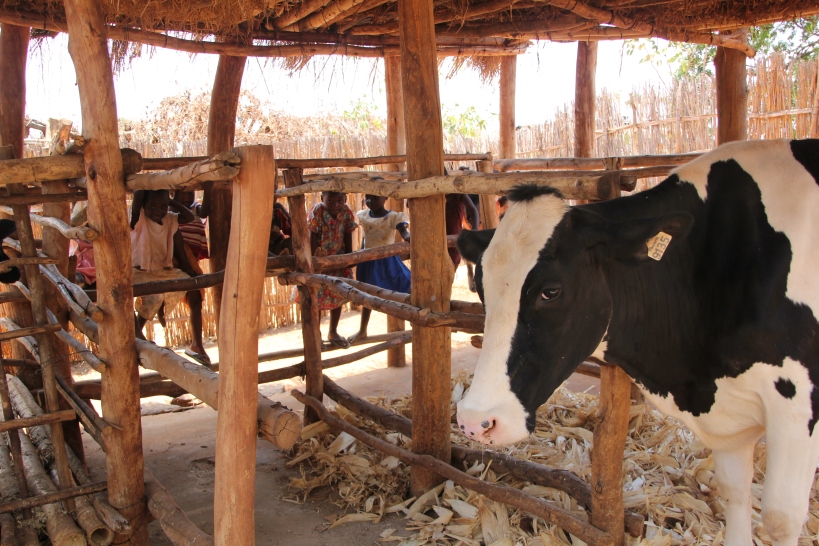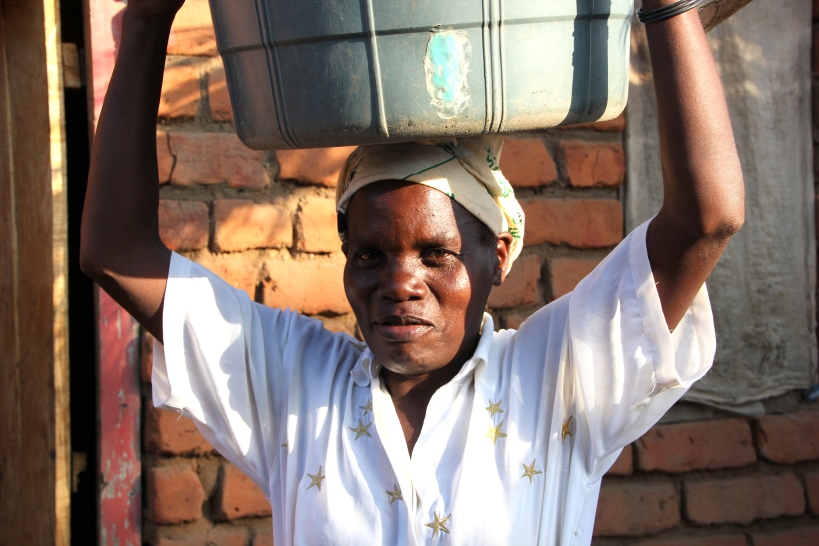 In my last two days in my last country in this incredible year of travel with Heifer, (sob!) we visited Ambato, a market town south of Cotopaxi, about 2 hours from Quito, Ecuador. After the bone-dry forest of Vega Alta, it was like dipping my eyeballs into a green misty pool — how delicious!
In my last two days in my last country in this incredible year of travel with Heifer, (sob!) we visited Ambato, a market town south of Cotopaxi, about 2 hours from Quito, Ecuador. After the bone-dry forest of Vega Alta, it was like dipping my eyeballs into a green misty pool — how delicious! 
It made me remember why I’m going to miss these countries so achingly much – and introduced me to yet another awesome Heifer partner: PACAT, an agro-ecological association that’s been working with indigenous farmers here for over 12 years to help them increase their production, income, and food sovereignty.

Gloria & Lizbeth Pomaquiasa on their land.
PACAT is boots on the ground – running 34 different community groups in 9 counties with 508 families to help them commercialize their agriculture, livestock, fish and cuy ventures. These are small farmers growing on plots of just 1 to 2 acres… but PACAT is no small-thinking organization. 
With Heifer’s help (financial and advisory),PACAT has hired a doctoral student to analyze the market to determine what sells best (they’ve narrowed it to 70 items), what people want that they’re not getting, as well as consumer buying patterns and preferences. They encourage farmers to use their ancestral traditions and to farm organically – for the health of the producer and the consumer.

Yep, they’re organic!
And when you see agro-ecology in action, it’s simply fantastic. We visited Jorge and Sonja Chonato’s farm in the Low Sierra (at 2000 meters), where temperatures are moderate and lots of crops flourish –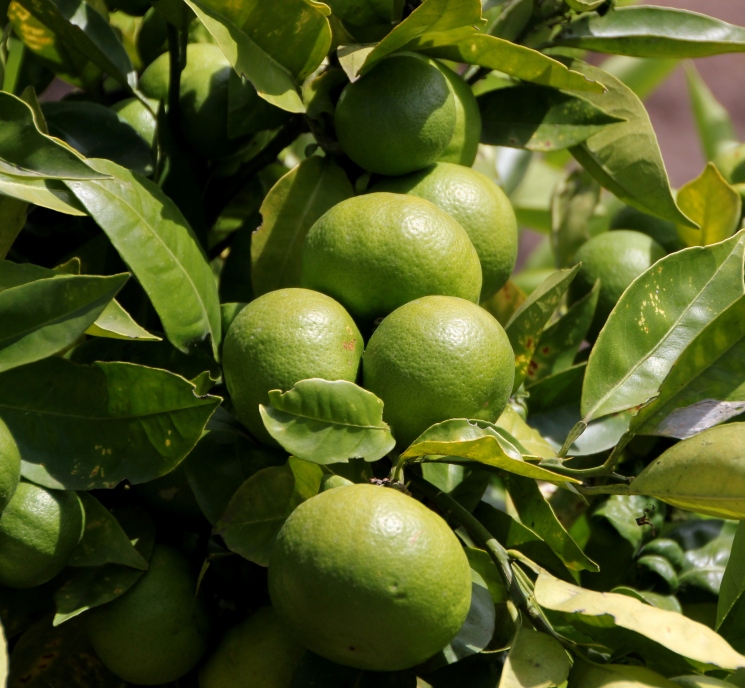
…and Gloria & Francisco Pomaquiasa’s farm in the Alta Sierra (at 4000 meters) where it’s cold, windy and challenging to grow much besides cabbage, potatoes and root crops.
Jorge and Sonja’s farm, at a lower altitude, had about 80 products in full flourish – and because agro-ecological farmers are “very curious always trying new things, grafting, experimenting, seeing what works,” the creativity was amazing!

Jorge’s growing 4 different varieties of babaco fruit – and I’ve never even heard of babaco!
I saw produce and trees I recognized, and dozens of fruits and vegetables I’d never seen before. Jorge just got 2 new milk cows from Heifer, and he was ecstatic… more manure to grow things! His children were healthy and engaged in their farming, his wife was unbelievably organized and capable, and their spirits were so buoyant, they couldn’t wait to show us all the success they’d had.

Jorge Chonato – one talented, happy farmer!
By the time we got up to Gloria & Francisco’s farm, it was almost dusk but the family was still working in the fields, hurrying to harvest the crops they’d take to market the next day.

Francisco Pomaquiasa, a 20- year PACAT member.
Francisco has been part of the Atahulpa Association of PACAT farmers here for 20 years (since he was 20) and like most farmers who’ve had Heifer trainings, his crops are now diversified and chemical-free. Despite the biting wind, the heads of cabbage, peas, radishes and turnips were gorgeous – and the family was equally proud of the 100 cuy (guinea pigs) they’d raised from Heifer’s gift of 60 cuy last year (they’ve already sold 60 males at $10 each and passed along the original gift).
Despite the biting wind, the heads of cabbage, peas, radishes and turnips were gorgeous – and the family was equally proud of the 100 cuy (guinea pigs) they’d raised from Heifer’s gift of 60 cuy last year (they’ve already sold 60 males at $10 each and passed along the original gift).

Almost too cute to eat … almost!
Five year-old Lizbeth was an expert packer of lettuce, carefully wedging the last head in the yellow market box, her little hands red with the cold, but her eyes dancing with excitement. Market Day was almost here!
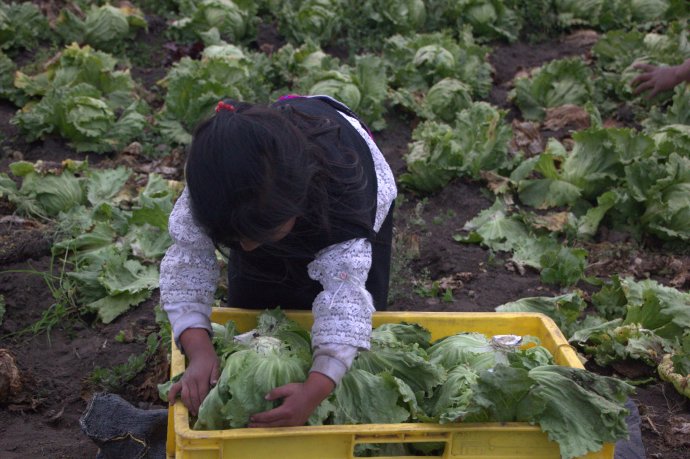
What a good helper!!
We arrived at Ambato Market the next day at 5 am, in time to see the farmers come in with their wares (some live 2-3 hours away)…
… and to watch the first shoppers trickle in at 6 am.

The frenzy begins..
Heifer/PACAT farmers all work under the same banner and wear distinctive aqua jackets so people can recognize the farmers whose meat, produce and fruit are known to be chemical-free and luscious … the bee’s knees!

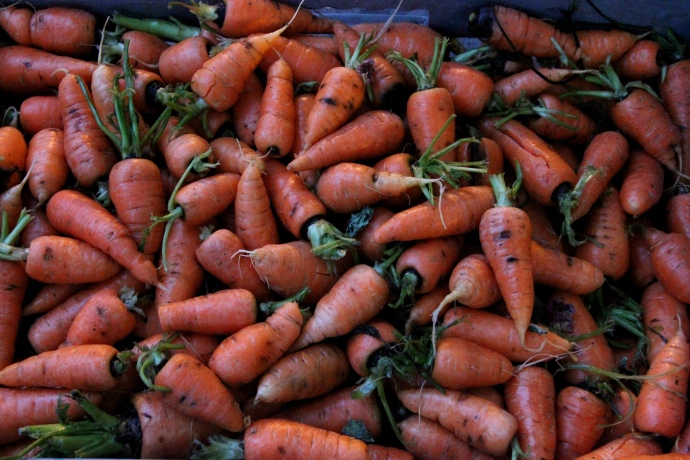




Last call for berries!
By 8:30 am, all the good stuff was all gone and the farmers were packing up their wares.But first, Lizbeth would get a sweet reward – 
…and then her family would pocket their $80 of income and go back home and start farming again.
That’s the way it goes all over the developing world — and at this time of year when we’re swimming in abundance & relaxing, it’s good to remember that for a billion people around the planet, it’s hard work just to eat every day. 
And they are so grateful for the little help they receive…
— so THANK YOU!
 A look back at the numbers makes me feel simultaneously exhilarated and a tiny bit exhausted. I traveled to 14 countries (15 if you count my test run to Uganda in October, 2011), and spent at least 280 hours on airplanes and another 390 hours (but who’s counting??) bouncing around in trucks.
A look back at the numbers makes me feel simultaneously exhilarated and a tiny bit exhausted. I traveled to 14 countries (15 if you count my test run to Uganda in October, 2011), and spent at least 280 hours on airplanes and another 390 hours (but who’s counting??) bouncing around in trucks.



 That when we reach out to help others, we gain more than we give…
That when we reach out to help others, we gain more than we give…
 …and we invest in our own happiness.
…and we invest in our own happiness.





















 Despite the biting wind, the heads of cabbage, peas, radishes and turnips were gorgeous – and the family was equally proud of the 100 cuy (guinea pigs) they’d raised from Heifer’s gift of 60 cuy last year (they’ve already sold 60 males at $10 each and passed along the original gift).
Despite the biting wind, the heads of cabbage, peas, radishes and turnips were gorgeous – and the family was equally proud of the 100 cuy (guinea pigs) they’d raised from Heifer’s gift of 60 cuy last year (they’ve already sold 60 males at $10 each and passed along the original gift).

































